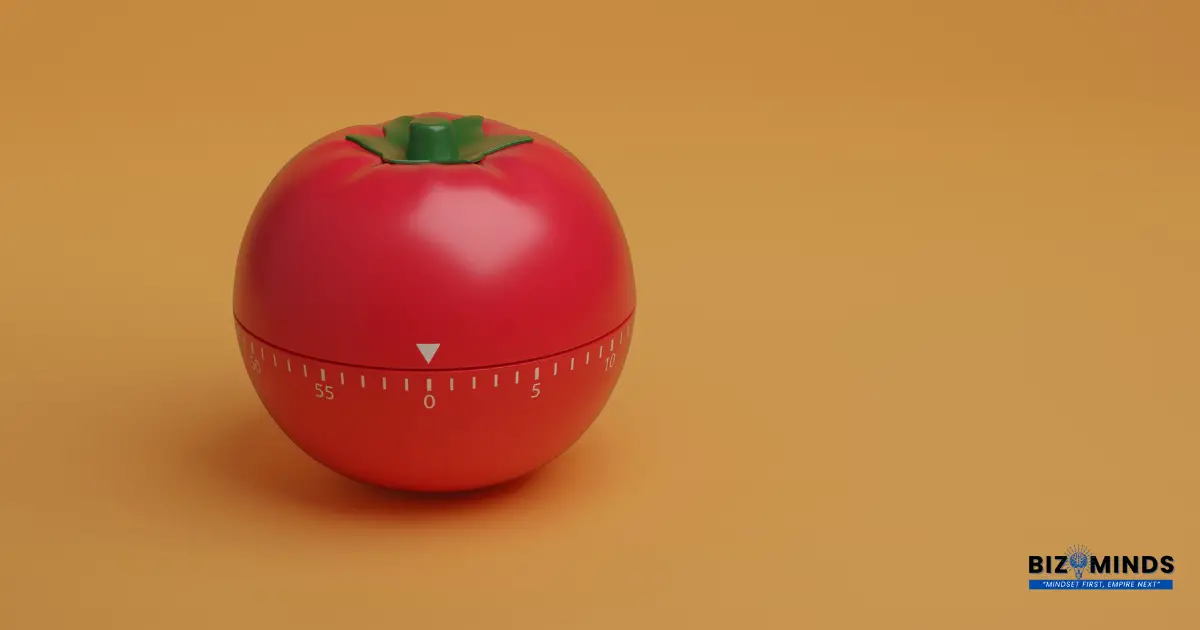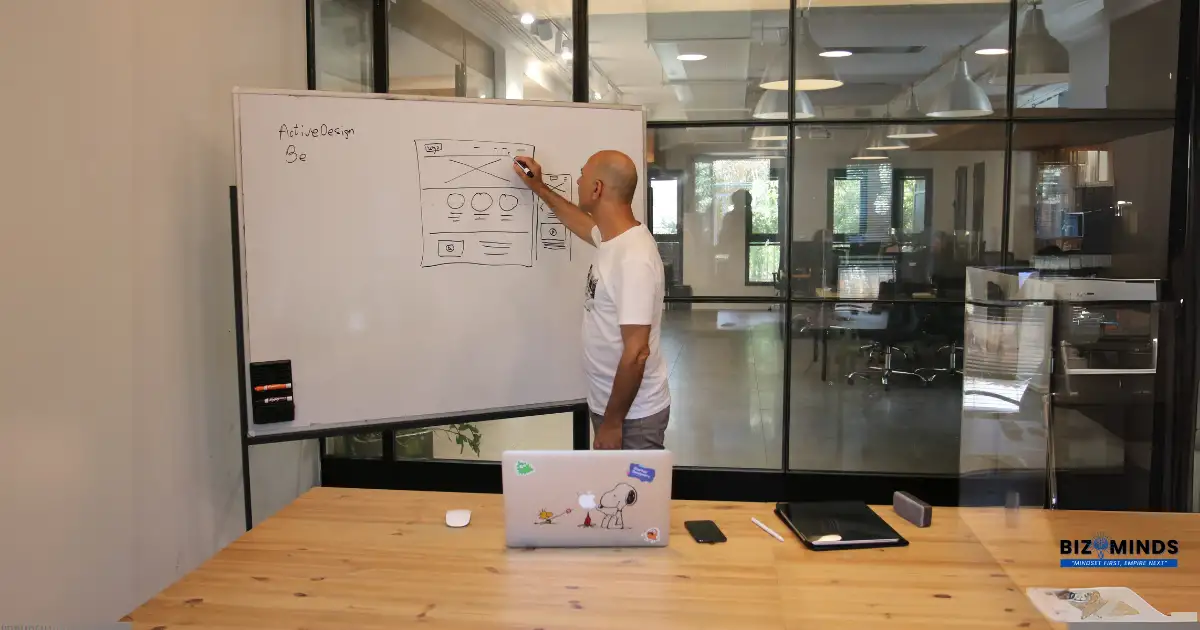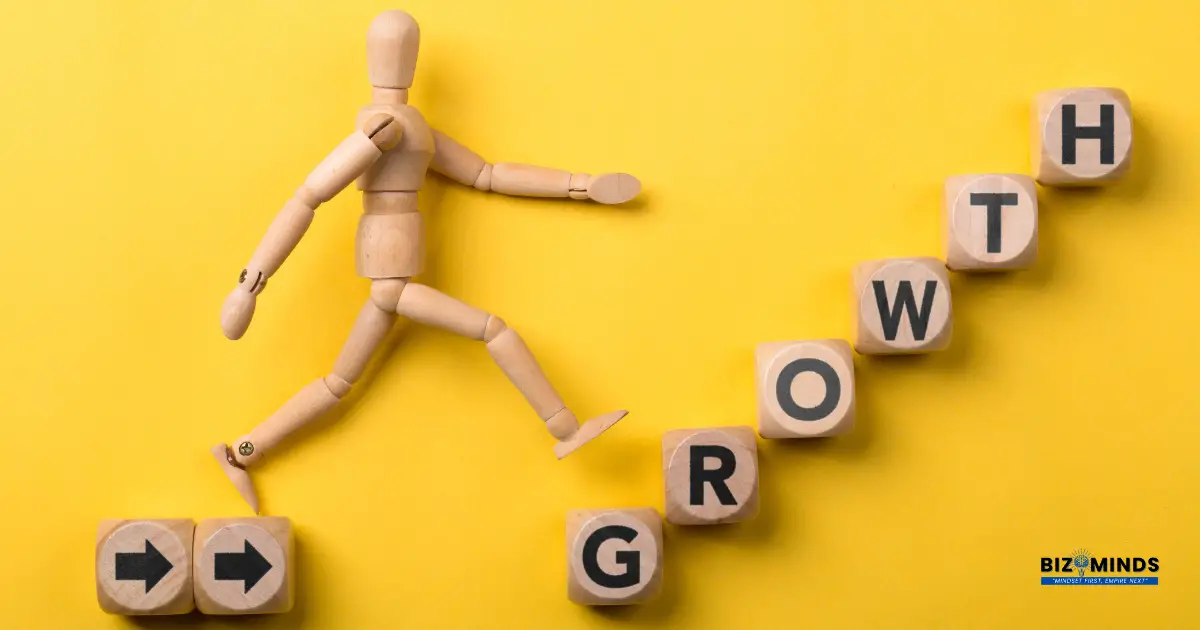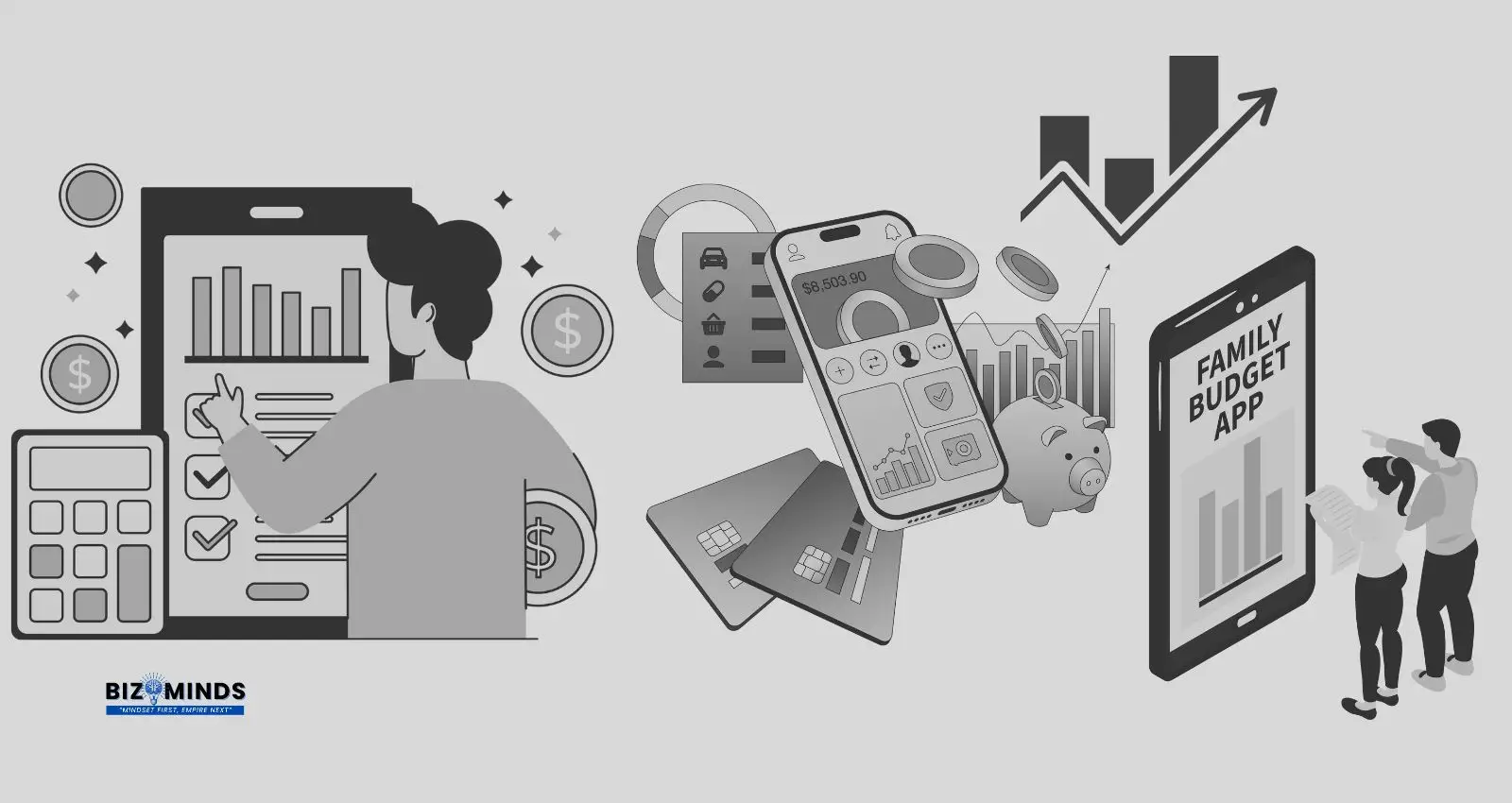
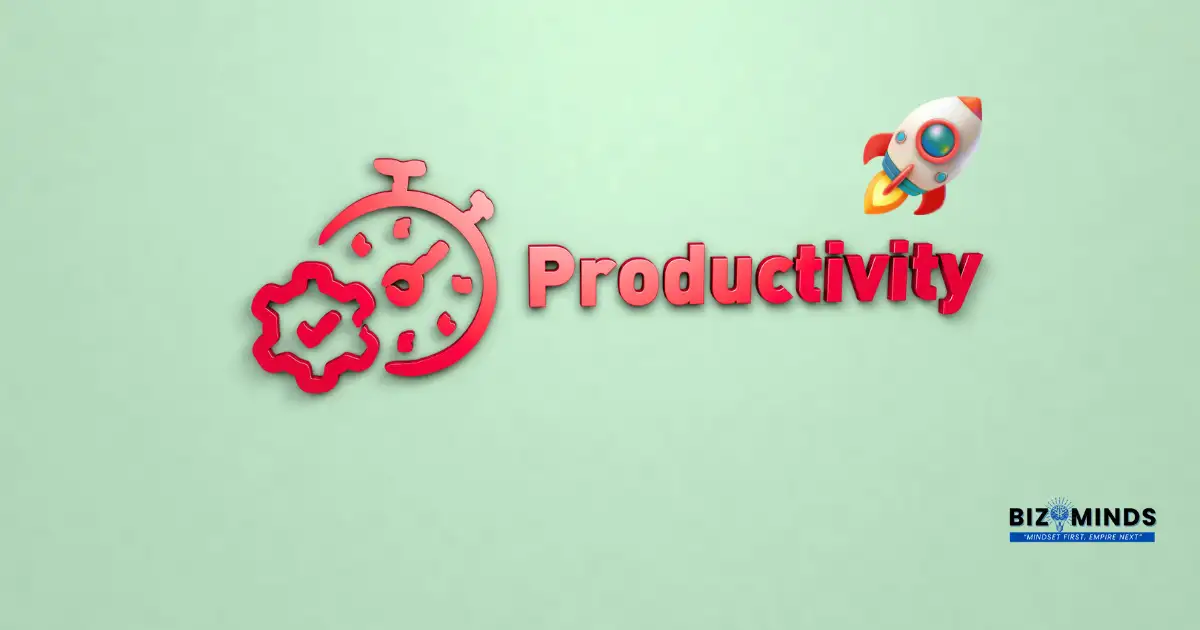
12 Life-Changing Productivity Hacks Backed by Research
Visualize this: You’re sitting at your desk at 3 PM on a Tuesday afternoon, surrounded by the familiar symphony of American workplace stress. Your coworker Sarah is juggling three video calls while responding to emails, Mark from accounting just grabbed his fourth cup of coffee, and somewhere in the distance, you can hear the frustrated sigh of someone dealing with yet another “urgent” deadline.
You’re not alone in this struggle. Across the United States, 82% of employees are at risk of burnout, and workplace stress has reached epidemic proportions, costing American businesses a staggering $300 billion annually. Statistics reveal a concerning trend: 77% of U.S. employees say they felt work-related stress within the last month, and 57% report that it has taken a toll on their health.
But here’s what’s truly heartbreaking about this productivity crisis: despite working longer hours than ever before, only 21% of American workers feel truly engaged at work, and the average employee is productive for just 4 hours and 36 minutes of an 8-hour workday. We’re caught in a vicious cycle—working harder but accomplishing less, burning out faster, and feeling increasingly disconnected from our professional purpose.
The human cost is devastating. In the U.S., workplace stress leads to about one million employees calling in sick every day, and it is linked to an estimated 120,000 deaths each year. These aren’t just statistics—they represent your colleagues, your friends, maybe even you.
Even in the midst of this crisis, a glimmer of hope shines through. While productivity anxiety affects 80% of American workers, and burnout mentions in employee reviews have increased by 32% year-over-year, science has identified specific, evidence-based strategies that can transform not just your work performance, but your entire relationship with productivity.
This isn’t another collection of trendy “life hacks” or productivity theater. These 12 strategies are grounded in rigorous research from institutions like Stanford, Harvard, and the National Institute of Health. They’ve been tested in real American workplaces—from Silicon Valley startups to Fortune 500 corporations—and the results are transformational.
Companies implementing these science-backed productivity methods report remarkable outcomes: Honeywell employees save 92 minutes per week, Canadian Tire’s 3,000 corporate employees save 30-60 minutes daily, and Farm Credit Canada saw 78% of users reporting significant time savings. These aren’t just efficiency gains—they represent reclaimed time for the things that matter most in your life.
The choice facing American workers today isn’t whether to work harder—it’s whether to work smarter. Will you continue struggling with the 79% who feel overwhelmed by workplace demands, or will you join the growing number of professionals who’ve discovered that true productivity isn’t about doing more—it’s about optimizing your biological systems, cognitive resources, and work environment to achieve extraordinary results with less stress and greater satisfaction.
In the bustling corridors of American workplaces—from Silicon Valley startups to Wall Street firms—there’s a productivity paradox unfolding. Despite working longer hours than ever before, only 21% of U.S. workers feel truly engaged at work, and the average employee is productive for just 4 hours and 36 minutes of an 8-hour workday. This stark reality costs the American economy a staggering $136 billion annually in lost productivity.
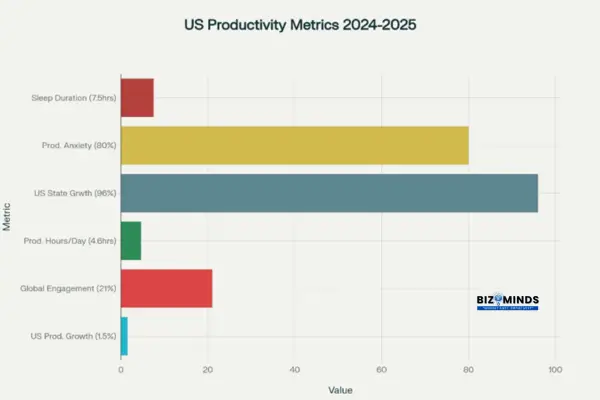
Key US workplace productivity statistics and challenges in 2024-2025
But here’s the encouraging news: while 80% of American workers report experiencing “productivity anxiety”, science has identified specific, evidence-based strategies that can transform your work performance. Unlike the endless stream of productivity “life hacks” flooding social media, these 12 methods are grounded in rigorous research and have been proven effective in real workplace environments across the United States.
The Foundation: Understanding Your Biology
1. Master Your Biological Prime Time
Your brain isn’t a machine that runs at constant speed—it operates on a sophisticated biological clock that can make or break your productivity. Stanford neuroscientist Dr. Andrew Huberman’s groundbreaking research reveals that viewing bright light in the morning and throughout the day properly sets our circadian rhythm, leading to elevated daytime mood, focus, and alertness.
The science behind this is remarkable. Your intrinsically photosensitive ganglion cells absorb sunlight and communicate directly with your pineal gland, which controls melatonin production. When you expose yourself to morning light, you’re essentially programming your brain for peak performance during specific hours.
For most Americans, this translates to two distinct “golden hours” of cognitive performance: 8:00-10:00 AM and 2:00-4:00 PM. The Association of American Medical Colleges reports that our internal circadian rhythm plays a role in workplace efficiency: morning types thrive in early hours, while evening types hit their peak later in the day.
How to implement this:
- Spend 10–15 minutes outdoors within the first hour after waking, regardless of whether it’s sunny or cloudy
- Schedule your most challenging work during your identified peak hours
- Use circadian-supporting lighting: bright light during the day, dim amber light in the evening
- Track your energy levels for two weeks to identify your personal prime time
2. Prioritize Sleep for Peak Performance
The sleep crisis in workplaces isn’t just about feeling tired—it’s devastating our cognitive abilities. Recent research shows that approximately 60% of adults experience negative effects from inadequate sleep, with 70% reporting that poor sleep quality directly impairs their general work productivity.
The numbers are sobering: sleep-deprived workers are 7 times more likely to be involved in workplace accidents, and insomnia alone costs businesses an additional $1,967 annually per employee in terms of accidents, illness, and presenteeism. When we examine the cognitive impact, sleep deprivation can lower your IQ by up to 10 points while performing tasks.
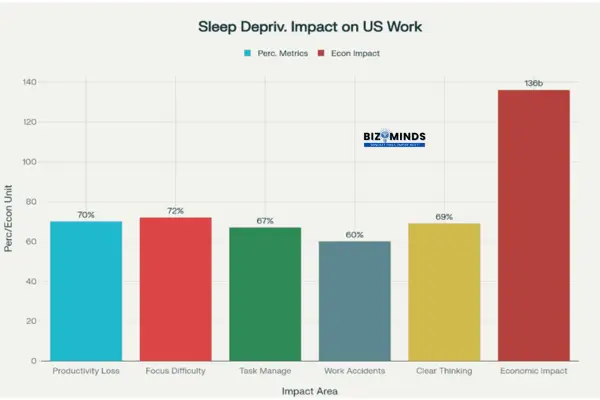
The devastating impact of sleep deprivation on US workplace performance and economics
But here’s what makes this hack so powerful: the benefits compound quickly. Research conducted with healthcare workers found that those obtaining the recommended 7-8 hours of sleep showed cognitive performance equivalent to being 10-15 years younger than their sleep-deprived counterparts.
Sleep optimization strategies for American workers:
- Keep your sleep and wake schedule consistent every day, including weekends
- Create a “wind-down” routine starting 2 hours before bed
- Keep your bedroom temperature between 65-68°F (optimal for most Americans)
- Use blackout curtains or an eye mask—even minimal light can suppress melatonin by up to 50%
Time Management and Focus Strategies
3. Implement the Pomodoro Technique (With Variations)
The Pomodoro Technique isn’t just a trendy productivity method—it’s backed by solid neuroscience research. Studies show that the human brain can maintain optimal focus for about 20-30 minutes before concentration starts waning, making the traditional 25-minute work intervals scientifically sound.
Recent research published in academic journals confirms that taking pre-determined, systematic breaks during a study session had mood benefits and appeared to have efficiency benefits. The technique works because it aligns with your brain’s natural attention span while providing regular recovery periods that prevent cognitive fatigue.
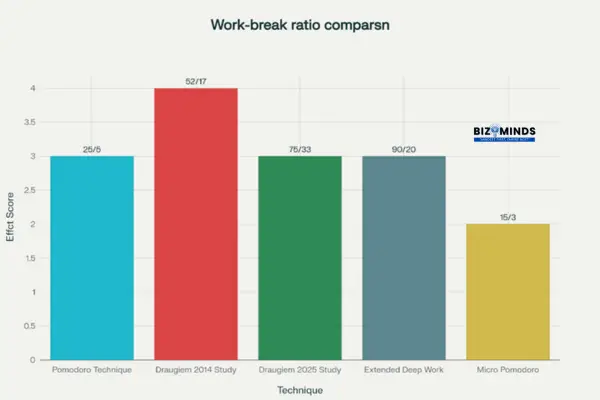
Comparison of evidence-based work-break ratios and their effectiveness for different work types
However, American productivity experts have discovered that the classic 25/5 ratio isn’t universally optimal. The Draugiem Group’s landmark study of over 100 employees found that the most productive workers operated on a 52-minute work, 17-minute break cycle. According to a 2025 study, highly productive employees follow a rhythm of 75 minutes of focused work followed by a 33-minute break, highlighting how hybrid and office work models may support extended focus times.
Implementing Pomodoro variations:
- Beginners: Start with traditional 25/5 cycles
- Deep work: Try 52/17 for complex tasks requiring sustained focus
- Hybrid workers: Experiment with 75/33 during office days
- Procrastination: Use “micro-Pomodoros” of 15/3 to overcome task resistance
4. Practice Time Blocking for Structured Productivity
Time blocking isn’t just calendar management—it’s a cognitive performance enhancer. Harvard Business Review research demonstrates that structured time blocking can increase productivity by up to 30%, primarily because it eliminates the mental overhead of constantly deciding what to do next.
Studies in neuroscience reveal that multitasking can slash productivity by nearly 40% and increase error rates by 12.6%, making it a costly habit in the workplace. When you pre-allocate specific time slots for different types of work, you’re essentially creating a “single-tasking” environment that allows your brain to operate at peak efficiency.
American companies like Google and Microsoft have reported significant productivity gains when employees adopt time-blocking practices. The key is creating realistic blocks that account for your natural energy fluctuations throughout the day.
Time blocking best practices:
- Block similar tasks together (batch processing)
- Include 15-minute buffers between blocks for transitions
- Color-code different types of work for quick visual recognition
- Schedule blocks during your identified biological prime time
- Protect your blocks as fiercely as you would any important meeting
5. Enter the Flow State through Deep Work
Cal Newport’s research on “deep work” has revolutionized how American professionals approach focused work. Deep work—the ability to focus without distraction on cognitively demanding tasks—is becoming increasingly rare and valuable in our economy. Yet studies show that achieving flow states can increase productivity by 500%.
The neuroscience behind flow is fascinating. During deep work sessions, your brain increases production of norepinephrine, dopamine, and endorphins—natural chemicals that enhance focus, pattern recognition, and satisfaction. Consistent deep work practice supports myelin development in the brain, strengthening focus and improving long-term performance.
American knowledge workers who master deep work report not just higher productivity, but significantly greater job satisfaction and career advancement. Research shows that professionals who can concentrate without distraction are becoming increasingly valuable as these skills become rarer.
Building deep work capacity:
- Start with 30-60 minute sessions and gradually increase
- Create a consistent deep work environment and ritual
- Use website blockers during deep work sessions
- Schedule deep work during your biological prime time
- Train colleagues to respect your deep work boundaries
Physical and Mental Optimization
6. Exercise for Cognitive Enhancement
The connection between physical exercise and workplace productivity is one of the most robust findings in occupational health research. A landmark British study of 200 workers found that employees who spent 30-60 minutes exercising during lunch reported an average performance boost of 15%. Even more impressive, 60% of employees said their time management skills, mental performance, and ability to meet deadlines improved on days they exercised.
The physiological mechanisms are well-understood. Exercise increases production of brain-derived neurotrophic factor (BDNF), which promotes the growth of new neural connections. It also enhances blood flow to the prefrontal cortex—the brain region responsible for executive functions like planning, decision-making, and impulse control.
For American workers dealing with sedentary jobs, the research is particularly encouraging. Studies show that even brief workplace exercise programs can reduce sick leaves by more than 50%, primarily due to reduced musculoskeletal disorders and improved mental health.
Workplace exercise strategies:
- Take walking meetings for non-sensitive discussions
- Use a standing desk for about 2–3 hours daily to boost posture and energy
- Do 5-10 minutes of desk exercises every 2 hours
- Walk the stairs instead of taking elevators
- Schedule “exercise meetings” with colleagues
7. Strategic Break-Taking and Recovery
American workers often view breaks as signs of laziness, but science tells a different story. A study by the University of Illinois shows that taking short diversions from work can greatly boost focus and productivity. The Draugiem Group’s extensive productivity studies confirm that taking quality breaks is essential to achieving maximum productivity.
Research suggests that active breaks, including walking, stretching, or light social interaction, restore focus more efficiently than passive activities like browsing social media or watching videos. Studies show that workers who take 4 breaks per day (compared to 3 during remote work periods) maintain higher productivity and report better well-being.
The “paradox of exercise” applies to breaks as well: to get energy, you have to expend some. This counterintuitive principle explains why a brief walk restores mental energy more effectively than sitting quietly.
Optimizing your breaks:
- Step away from your workspace completely
- Get natural light exposure when possible
- Engage in light physical movement
- Practice brief mindfulness or breathing exercises
- Avoid checking email or work-related messages
8. Morning Light Exposure and Routine Optimization
Dr. Andrew Huberman’s research has brought circadian science into mainstream workplace wellness. His studies show that bright light exposure in the morning and throughout the day properly sets our circadian rhythm, leading to elevated daytime mood, focus, and alertness, as well as improved nighttime sleep.
The mechanism is elegant: morning light exposure suppresses melatonin production and triggers cortisol release—exactly what you want for peak daytime performance. Cortisol is beneficial when elevated in the morning and early part of the day, but problematic when elevated at night.
American workers who implement morning light exposure report remarkable improvements. Studies show that even on overcast days, outdoor light provides 1,000-10,000 lux compared to typical indoor lighting of 200-500 lux. This difference is crucial for optimal circadian function.
Morning optimization protocol:
- Get 10-15 minutes of outdoor light within 1 hour of waking
- Face east during morning light exposure when possible
- Use a 10,000 lux light therapy lamp during dark winter months
- Delay coffee consumption for 90-120 minutes after waking
- Maintain consistent wake times, even on weekends
Cognitive and Environmental Strategies
9. Eliminate Multitasking (It’s Scientifically Proven Ineffective)
The myth of productive multitasking dies hard in American workplaces, but the research is unambiguous: multitasking decreases employee productivity by up to 40%. Recent studies using brain imaging technology show that the human brain can only focus on one thing at a time, and what we call multitasking is actually rapid task-switching that comes with significant cognitive costs.
The numbers are stark: multitasking increases mistake likelihood by 12.6% and can temporarily lower IQ by up to 10 points. Perhaps most concerning, research shows that employees who multitask during meetings not only perform 17% worse themselves, but also impair the performance of colleagues who observe the multitasking.
Strategies for single-tasking:
- Use the “one tab rule” in your browser
- Turn off non-essential notifications during focused work
- Practice “batching” similar tasks together
- Use the “two-minute rule” for quick tasks that interrupt your flow
- Create physical barriers to multitasking (putting phone in another room)
10. Optimize Your Work Environment
Environmental factors have a profound impact on cognitive performance, yet most American workers have little control over their office environment. However, research from the University of Exeter found that employees were 15% more productive when workplaces were decorated with houseplants.
The science of environmental productivity extends beyond plants. Studies show that:
- Temperature between 68-72°F optimizes cognitive performance
- Natural light improves mood and alertness by up to 25%
- Organized spaces reduce cortisol levels and improve decision-making
- A background noise level of 70 decibels, similar to that of a coffee shop, can boost creativity.
For American remote workers, environmental control becomes even more critical. Research during the pandemic showed that workers who optimized their home office environment maintained productivity levels equal to or higher than pre-pandemic office work.
Environment optimization checklist:
- Set your monitor at a right angle to windows to minimize glare
- Add plants or nature imagery to your workspace
- Use noise-canceling headphones in open offices
- Keep your workspace organized and clutter-free
- Adjust lighting to match natural circadian rhythms
11. Strategic Nutrition for Sustained Energy
The connection between nutrition and cognitive performance is particularly relevant for American workers, given our food culture and workplace eating patterns. Research published in JAMA Neurology found that consumption of ultra-processed foods above 19.9% of total daily calories was associated with a 28% faster rate of global cognitive decline.
Conversely, studies with healthcare workers showed that adequate workplace nutrition enhanced cognitive function to the performance level of a younger age group. The key insight is that even moderately higher daily intake of brain-supporting nutrients corresponds to better cognitive performance.
American workers face unique nutritional challenges: long commutes, irregular schedules, and limited healthy food options near many workplaces. However, strategic nutrition interventions can yield significant productivity benefits.
Workplace nutrition strategies:
- Eat protein-rich breakfast to stabilize blood sugar
- Consume complex carbohydrates for sustained energy
- Include omega-3 rich foods (fish, walnuts) for brain health
- Stay hydrated—even 2% dehydration impairs cognitive function
- Avoid the “lunch coma” with lighter, nutrient-dense midday meals
Advanced Productivity Systems
12. Implement the “Eat the Frog” and Priority Management
The final hack combines psychological insights about willpower depletion with practical priority management. Research shows that decision fatigue and willpower depletion occur throughout the day, making morning hours ideal for tackling the most challenging or important tasks.
The “Eat the Frog” principle doing your hardest task first, aligns with natural cortisol rhythms. Cortisol levels are naturally highest in the morning, providing the mental energy needed for challenging work. Studies show that professionals who tackle difficult tasks during their biological prime time report higher completion rates and better quality outcomes.
This approach also leverages what psychologists call the “fresh start effect”, our tendency to feel more motivated and capable at the beginning of temporal landmarks like days, weeks, or months.
Priority management system:
- Choose the one most important task to focus on the night before.
- Complete this task during your biological prime time
- Use the Eisenhower Matrix to categorize remaining tasks
- Review and adjust priorities weekly, not daily
- Celebrate completion of difficult tasks to reinforce the habit
Implementation Strategy: Your 30-Day Transformation
The key to successfully implementing these productivity hacks lies in gradual integration, not dramatic overhaul. Research on habit formation shows that attempting to change too many behaviors simultaneously leads to decision fatigue and eventual abandonment.
Week 1-2: Foundation Building
- Start with sleep optimization and morning light exposure
- Implement basic time blocking for your most important work
- Begin with 25-minute Pomodoro sessions
Week 3-4: Expanding the System
- Add strategic breaks and eliminate obvious multitasking
- Optimize your work environment with available resources
- Introduce workplace exercise or movement
Month 2 and beyond: Advanced Integration
- Experiment with different work-break ratios
- Develop deep work capabilities
- Fine-tune nutrition and priority management systems
Conclusion: Your Journey to Productivity Mastery
As we reach the end of this exploration into science-backed productivity, it’s important to recognize that you’re likely among the 80% of American workers experiencing productivity anxiety. The sobering reality is that 82% of employees are at risk of burnout, and workplace stress costs American businesses $300 billion annually. But here’s the empowering truth: while you can’t single-handedly fix America’s workplace crisis, you have more control over your productivity and well-being than you might believe. The 12 strategies outlined aren’t just efficiency hacks—they’re your pathway to joining the 21% of truly engaged workers who drive 23% higher profitability and experience 18% less turnover.
The beauty of these productivity methods lies in their compound effect. When Microsoft employees implemented similar strategies, they saved an average of 92 minutes per week, and companies with highly engaged workforces are 10 times more likely to increase revenue. Your transformation won’t just impact you—it will create a ripple effect that touches your family, colleagues, and organization. As you reclaim time, reduce stress, and renew your sense of purpose, you’ll become living proof that professional fulfillment doesn’t require sacrificing health, relationships, or peace of mind.
Starting tomorrow, commit to just three of these 12 hacks: master your biological prime time with morning light exposure, implement strategic breaks using the 52/17 ratio, and eliminate obvious multitasking. That’s it – three changes over thirty days. Remember, sustainable productivity isn’t about perfect implementation; it’s about progress, experimentation, and self-compassion. Persons who successfully transform their productivity don’t succeed because they’re perfect—they succeed because they keep experimenting and showing up, just like the 78% of users who reported significant time savings in corporate productivity studies.
You’re entering this journey at a pivotal moment when remote work has proven that location flexibility enhances productivity, and companies are finally recognizing that employee well-being directly impacts their bottom line. The old paradigm of equating hours worked with value created is dying, replaced by one that rewards outcomes and sustainable high performance. By mastering these science-backed methods, you’re positioning yourself at the forefront of this transformation. Your productivity revolution starts now, welcome to the 21%.





